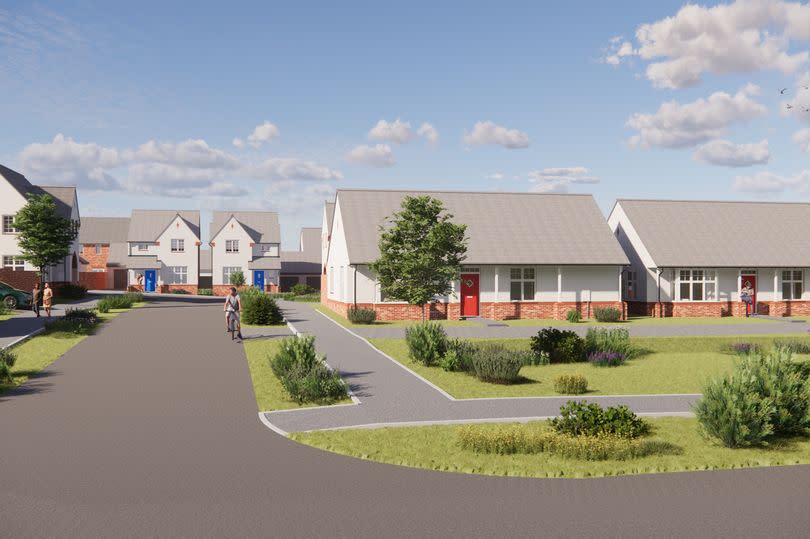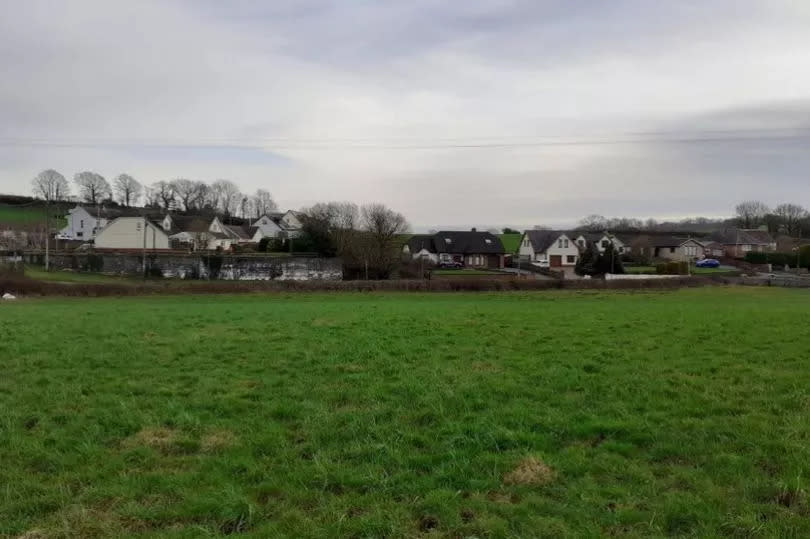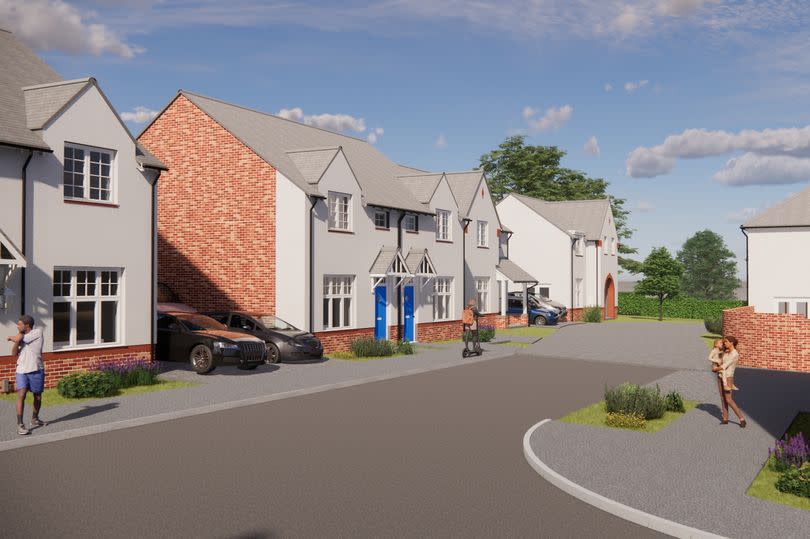Village will get 50% bigger after controversial housing plan given green light

A village made up of around 80 homes will increase in size by around 50% after controversial plans for a new estate were approved. Carmarthenshire Council's planning committee approved the decision followed a lengthy and impassioned debate in which objectors from the village, Porthyrhyd, were critical of the pre-application consultation and raised concerns about over-development, flood risk and the potential dilution of the Welsh language.
Councillors were told, though, that there was a pressing need for housing in rural areas and that Welsh Water and other statutory consultees had not objected. The 1.6-hectare site west of the B4310 is allocated for 27 homes - 30% of which would need to be affordable - in the council's local development plan, but the figure is only "indicative", according to the planning committee report.
Applicants Jones Bros (Henllan) Ltd and social housing provider Pobl Group proposed 42 houses, bungalows and flats, 29 - or 69% - of which will be affordable. Planning officer John Thomas said the density of development will still be "lower than average" despite the higher number of homes, and that there was "a dire need" for affordable housing.
READ MORE: 'Noisy, smelly' factory that makes thousands of tons of stretchy cheese hit with complaints
The 29 affordable homes will consist of 19 social rented properties, including four flats, and 10 low-cost ownership ones. The remaining 13 homes on the estate will be three and four-bedroom detached houses for sale on the open market, although the applicants said they intended to offer them to people with a local connection for an initial period of eight weeks.
Mr Thomas said the overwhelming majority of occupiers of social rented homes built by Pobl Group at developments in Tycroes and Cross Hands previously lived within 12 miles of the two communities. Objector Andrew Davies-Wrigley, of action group Mudiad Amddiffyn Porth-y-rhyd, claimed the applicants' pre-application consultation was the "worst tick-box exercise I have ever seen" and that images of the development didn't reassure villagers about its impact.
These factors, he said, helped explain why there were nearly 200 objections. Mr Davies-Wrigley, who said the action group didn't object to new housing as long as it was "in the right place" with no adverse effects on the community, conceded that a public meeting did eventually take place but that it was one day before the deadline for public comments to be submitted to the planning department.

He added that there was "zero communal space" proposed at the new estate, meaning children would have to cross two roads to get to the nearest play area. Another objector, Mair Evans, said rainfall turned parts of Porthyrhyd into something from "horror movies" with items such as colostomy bags and toilet paper ending up on people's lawns.
Flooding, she said, was not simply a hypothetical concern. "It's something that cannot be ignored," she said. Ms Evans also said the only way to protect the high proportion of spoken Welsh in the village, which has two pubs, a community hall, and a Post Office and shop, was to reject over-development.
Planning agent Jason Evans, of behalf of the applicants, said there were 50 applications per council house in the area, highlighting the need for low-cost housing. He said the shortage of such homes meant local Welsh speakers had to move elsewhere to live.
Mr Evans said surface water from the development would be removed correctly, and that flooding to date stemmed from a culvert which had been blocked for years. He said: "The application seeks to remedy the surface water issue."
He added that it had taken two years of negotiation to reach the point where the council's planning department recommended the scheme for approval. Ward councillor Ann Davies said she felt the estate was over-development in a village of some 80 homes.
Two out of three other housing schemes in the village, she said, hadn't been finished properly leaving residents living in "a total mess". Cllr Davies was concerned about the impact on a largely Welsh-speaking community and asked that the development, if it was approved, was built in four phases with local people given first refusal for a period of three months for the open market homes.
Committee member, Cllr Mansel Charles, asked why the flooding problem hadn't been solved already while Cllr Jean Lewis said she felt Porthyrhyd's infrastructure wasn't ready for the estate. Welsh Water representatives appeared by video link to say they were satisfied that foul drainage arrangements were satisfactory but that there were "operational issues within the catchment" relating to blockages and excessive water.

"We are working with the land drainage authority and looking to improve it from an operational perspective," said one of them. A senior council housing officer then addressed the committee to say there were currently more than 4,000 people on the housing waiting list in Carmarthenshire, that half of them were in "high priority need", and that a local lettings policy would apply when offering out the social rented homes.
Cllr Carys Jones wanted certain assurances about the development but said young people needed affordable homes and that the open market ones could also be bought by people in the area who earned a good salary and who spoke Welsh. Before a majority of the committee voted in favour of the development, planning officer Mr Thomas referred back to flooding issues, saying: "We have to teach people about what they put down toilets."

 Yahoo News
Yahoo News 
